
Solemyo
EN - Installation and use instructions and warnings
IT - Istruzioni ed avvertenze per l’installazione e l’uso
FR - Instructions et avertissements pour l’installation et l’utilisation
ES - Instrucciones y advertencias para la instalación y el uso
DE - Anweisungen und Hinweise für die Installation und die Bedienung
PL - Instrukcje instalacji i użytkowania i ostrzeżenia
NL - Aanwijzingen en aanbevelingen voor installering en gebruik
Autonomous power system
SYKCE
PSY24
Page is loading ...

The design and manufacture of the devices making up the Solemyo
system and the information in this manual fully comply with current
standards governing safety. However, incorrect installation or program-
ming may cause serious physical injury to those working on or using
the system. For this reason, during installation, always strictly observe
all instructions in this manual.
If in any doubt regarding installation, do not proceed and contact the Nice
Technical Assistance for clarifications.
WORKING IN SAFETY!
Warning – for personal safety it is important to observe these
instructions.
Warning – Important safety instructions: keep these instructions
in a safe place.
Observe the following warnings:
– make electrical connections exclusively as envisaged in this manual
incorrect: connections could cause serious damage to the system.
– If the power cable in the pack is used outdoors, it must be entirely
protected with special ducting suitable for the protection of electric
cables.
– never touch metal parts of the sockets on the battery casing with
metal objects.
Considering the risk situations that may arise during installation phases
and use of the system, the devices supplied in the pack must be
installed in observance of the following warnings:
– never make any modifications to part of the devices other than those spec-
ified in this manual. Operations other than as specified can cause malfunc-
tions. The manufacturer declines all liability for damage caused by
makeshift modifications to the devices.
– never place devices near to sources of heat and never expose to naked
flames. This may damage system components and cause malfunctions,
fire or hazardous situations.
– ensure that the devices cannot come into contact with water or other liq-
uids. During installation ensure that no liquids penetrate the devices
present.
– the device packaging material must be disposed of in full observance of
current local legislation governing waste disposal.
Warning! – Keep this manual in a safe place to enable future device mainte-
nance and disposal procedures.
1 – Description and intended use
SOLEMYO is an autonomous power system designed for Nice auto mations
for gates and garage doors (the list of compatible automations is provided on
the sheet in the product pack and can also be consulted on the website
www.niceforyou.com).
Any other use is to be considered improper! The manufacturer declines
all liability for damage resulting from improper use of the various
devices of the system and other than as specified in this manual.
The Solemyo system is particularly suitable for power supply to automations
located far from the fixed power mains.
It comprises 3 standard devices, the combination of which enables different
configurations, able to store solar energy or electrical mains energy for use
when required by the automation on which the system is installed.
The various system devices are available in the following packs:
- PSY24: the core of the system. This device can store electrical energy pro-
duced by SYP during the hours of sunlight, making it available at any time of
day, including days with adverse weather conditions. The same device can
also store energy from the fixed electrical mains, via SYA1. The pack con-
tains the PSY24 battery, cables, connectors for automation connections, fix-
ing hardware and this manual;
- SYP: this is a device able to convert sunlight directly into electrical energy.
The pack contains a SYP photovoltaic panel, for recharging PSY24, and fix-
ing hardware;
- SYKCE: this is a complete kit for autonomous photovoltaic power supply.
The pack contains the PSY24 and SYP devices, cables, connectors for
automation connections, fixing hardware and this manual;
- SYA1: this device enables periodic or emergency recharging of PSY24 via
the electrical mains in a protected environment. The pack contains a SYA1
battery charger.
2 – Preliminay installation checks
To ascertain suitability of the system with respect to the specific features of
the automation to be powered, the following checks should be performed as
well as a check for compliance of the technical data in the chapter “Techni-
cal characteristics”.
In the vicinity of the automation to be powered, locate the ideal point for
installation of the photovoltaic panel and the location for the battery, taking
into consideration the following restraints:
a) the application limits specified in this chapter;
b) the maximum length of the power cable (3 m) and the cable of the photo-
voltaic panel (3 m);
c) the space available in the vicinity of the automation to be powered.
Also check the following:
d) ensure that the selected surfaces for installation of the two devices are
solid and guarantee a stable fixture.
e) ensure that each device to be installed is in a sheltered location and pro-
tected against the risk of accidental impact.
f) in particular, for each device ensure the following:
SYP photovoltaic panel
– ensure that the selected panel installation site guarantees 100% direct
exposure to sunlight (full sun) every day of the year.
– ensure that the selected panel installation site is far from vegetation,
walls or other situations that may create shade, even partial
, on the sensi-
tive surfaces of the panel.
Caution! – this surface must be exposed to direct sunlight in all
points; partial shade, even if small in size (for example caused by a
leaf or other object) will significantly reduce the power capacity of
the panel.
– check the possibility of correctly positioning
and inclining the panel,
with reference to the technical instructions in Chapter 4.
PSY24 battery
To ensure optimal efficiency of the battery and prolonged battery lifetime, it
should be installed in a location – in the vicinity of the automation to be
powered – protected against high summer temperatures and low winter
temperatures.
In fact the battery charge performance depends on the ambient temper-
ature where the battery is installed: optimal efficiency is obtained at medi
-
um temperatures, while efficiency is considerably reduced at low temper-
atures.
On the other hand, battery lifetime is influenced above all by high sum
-
ENGLISH
GENERAL SAFETY WARNINGS
AND PRECAUTIONS
KNOWLEDGE OF THE SYSTEM AND
PREPARATION FOR INSTALLATION
English – 1
EN
Original instructions

2 – English
EN
Base coefficient (Cb) for
calculating the maximum possible
number of manoeuvre cycles
per day
Months of year
GRAPH A - For countries 45° NORTH of the Equator
Base coefficient (Cb) for
calculating the maximum possible
number of manoeuvre cycles
per day
Months of year
GRAPH B - For countries 45° SOUTH of the Equator
Base coefficient (Cb) for
calculating the maximum possible
number of manoeuvre cycles
per day
Months of year
GRAPH C - For countries on the Equator
Fig. A
mer temperatures, which accelerate part ageing. Normally the battery
average lifetime is approx. 4-5 years; this also depends on the intensity of
automation use.
SYA1 battery charger
Refer to the specific chapter in device instruction manual.
3 – System application limits
VERY IMPORTANT:
- When the automation is powered by the “Solemyo” system, it must
never be connected or powered simultaneously by the electrical
mains.
- The devices SYP and SYA1, which supply energy to PSY24, are alter-
natives and cannot be used simultaneously.
• for photovoltaic power supply (with SYP)
Graphs A, B and C indicate the solar power available, on the basis of the
location’s latitude, at all times of the calendar year, with the automation pow-
ered exclusively using PSY24 and SYP devices. The graph curve is generat-
ed taking into account the quantity of daylight recorded at a specific latitude
within a year.
To obtain the maximum possible number of cycles per day, proceed as fol-
lows:
01. On graph A, B or C (depending on the latitude of your system) identify
the period of the year concerned, then locate value “Cb” on the vertical
axis, corresponding to this period, as shown in the example in the
graph.
02. Then use value “Cb” to make the calculations as stated in the sheet in
the product pack.
Warning – During the day, if the photovoltaic panel remains in the shade
for a certain period of the day (in particular from 10 am to 2 pm) the maxi-
mum possible number of operating cycles decreases in proportion to the
hours without panel exposure to sunlight.
Warning – To increase the maximum possible number of cycles per day,
automation consumption must be reduced. For this reason, the “Standby”
function must be programmed on the automation control units, setting the
most efficient level (refer to the automation instruction manual).
• for mains power supply (with SYA1)
The PSY24 battery must be recharged via the mains in a protected environ-
ment, previously detaching PSY24 from the SYP solar panel and the
automation.

4 – Component assembly and connections
STEP 1
– SYP Optimal photovoltaic panel positioning
As a general rule, the panel must be positioned so that it can be constantly
illuminated by sunlight during the day and throughout the year. This means
that its horizontal position and vertical angle must be calculated precisely on
the basis of the location where it is to be installed.
Therefore, after performing the checks specified in chapter 2, and consider-
ing the various options for panel installation as shown in fig. 6, proceed as
follows:
• Ensure the correct position of the panel on the horizontal plane
as fol-
lows:
a) In the installation site, determine the cardinal points NORTH and SOUTH,
with the aid of a compass or a geographical map of the location.
b) Then position the panel in the direction NORTH or SOUTH, according to
the following:
– if the installation site is in a country North of the equator (United
States; Europe; Russia; etc.) the panel must be positioned exactly
SOUTH;
– if the installation site is in a country South of the equator (Latin Amer-
ica; Australia; Indonesia, etc.) the panel must be positioned exactly
NORTH.
For further information, refer to fig. 4.
• Ensure the correct position of the panel on the vertical plane
as fol-
lows:
Considering the fact that maximum efficiency of the panel is also required in
the winter period, i.e. when the daily hours of sunlight are fewer than in the
Summer, the panel should be positioned at an angle that receives the sun
rays at right angles (frontal) to the sensitive surface.
This angle corresponds to the latitude of the location
and can be read on any
commercial geographical map. For example, Madrid has a latitude of 40°;
Venice 45°; or London approx 50° etc. For further information, refer to fig. 5.
STEP 2 – Fixing the SYP photovoltaic panel in the selected site
After establishing the precise position of the panel, fit all components of the
support bracket according to the instructions in fig. 3.
Then fix the panel bracket to the selected surface as shown in fig. 6.
STEP 3 – Fixing the PSY24 battery in the selected site
After performing the checks specified in chapter 2 establishing the precise
position for the battery, fix the latter onto the selected surface as shown in
fig. 13. Note – For fixture, use two screws on the underside, only if the bat-
tery is to be secured in a fixed position and not removable.
STEP 4 – Cable routing
After fixing the panel and battery, route the panel cable through the tube or
protection ducting through to the battery.
With reference to the instruction manual of the automation to be powered,
remove the control unit protection cover. Then pass the end of the power
cable (with wires stripped) through the automation (where the other cables
are routed) and through the dedicated cable clamp. Then route the cable
through the protection ducting (if present) through to the battery.
Caution! – Do not connect the power cable to the control unit; leave access
to the control unit open and leave the cable clamp loose.
STEP 5 – Assembly of “ L” socket on the SYP photovoltaic
pa nel cable
If the cable is too long, it can be shortened, taking care to strip the wires so
that their length is equa
l to the values specified in the fig. A (ca u tion! – differ-
ent lengths may impair subsequent assembly of the socket).
Then proceed with assembly of the GREY
“L” type socket on the end of the
panel cable, as follows:
01. Insert the various elements of the socket on the cable, taking care to
observe the sequence as shown in fig. 7;
IMPORTANT! – If the power cable in the pack is used out-
doors, it must be entirely
protected with special ducting suit-
able for the protection of electric cables.
CAUTION! – Do not modify the electric jumper on the connector (fig. 8).
02. Using a slotted screwdriver, attach the blue wire to terminal n° 1 on
the connector and brown wire to the earthing terminal (4) (fig. 9):
Note – The reference numbers and symbols are printed on the con-
nector below the terminals and on the opposite side.
03. After fixing the two wires, insert the connector in its casing (fig. 10).
Important – The correct position of the connector is that with the
earthing symbol in the lower position (see fig. 10);
04. Then pull the cable outwards from the socket and insert the seal and
washer (fig. 11-a-b). Lastly, tighten the cable clamp (fig. 11-c) using a
wrench, to guarantee completely sealed closure
.
05. After assembling the socket, position the seal supplied on the connec-
tion side (fig. 12).
STEP 6 – Assembly of “ L” socket on the power cable
If the cable is too long, it can be shortened, taking care to strip the wires so
that their length is equal to the values specified in the fig. A (Caution! – dif-
ferent lengths may impair subsequent assembly of the socket).
Then proceed with assembly of the BLACK
“L” type socket on the end of
the power cable, as follows:
01. Insert the various elements of the socket on the cable, taking care to
observe the sequence as shown in fig. 7;
CAUTION! – Do not modify the electric jumper on the connector (fig. 8).
02. Using a slotted screwdriver, attach the blue wire to terminal n° 1 on
the connector and the brown wire to the earthing terminal (4) (fig. 9):
Note – The reference numbers and symbols are printed on the con-
nector below the terminals and on the opposite side.
03. After fixing the two wires, insert the connector in its casing (fig. 10).
Important – The correct position of the connector is that with the
earthing symbol in the lower position (see fig. 10);
04. Then pull the cable outwards from the socket and insert the seal and
washer (fig. 11-a-b). Lastly, tighten the cable clamp (fig. 11-c) using a
wrench, to guarantee a completely sealed closure
.
05. After assembling the socket, position the seal supplied on the connec-
tion side (fig. 12).
STEP 7 – Connecting the SYP photovoltaic panel to the
PSY24 battery
To connect the panel to the battery, proceed as follows:
01. Connect the GREY
“L” type socket to the “IN” connector on the bat-
tery (fig. 14);
02. To select the most suitable connection configuration for the connection
of all system devices, refer to the example shown in fig. 15. Note – If
frequent disconnection of the battery plug is envisaged, use the screw
in fig. 16-a. Otherwise use the screw in fig. 16-b.
STEP 8 – Connecting the PSY24 battery to the automation
CAUTION! – For safety reasons, the operations described in Step
8 must be performed exclusively by a skilled and qualified tech-
nician.
To connect the battery to the automation, proceed as follows:
01. Access the control unit of the automation and insert the power cable
connector in the buffer battery socket on the control unit. To locate this
socket, refer to the instruction manual of the automation to be pow-
ered.
02. Connect the BLACK
“L” type socket to the OUT connector on the bat-
tery (fig. 17);
03. Fix the socket by means of the safety screws supplied, with reference
to fig. 18. Note – If frequent disconnection of the connector from the
battery is envisaged, use the screw in fig. 16-a. Otherwise use the
screw in fig. 16-b.
SYSTEM INSTALLATION
English – 3
EN

EN
4 – English
• The automation control unit does not turn on and the PSY24 battery
does not supply any signal.
This may depend on incorrect connections or electrical wiring not fully insert-
ed; otherwise the PSY24 battery may be completely discharged, without
sufficient energy to indicate the battery low status.
In this case, follow the quick recharging procedure, using the SYA1 battery
charger, or wait until the SYP photovoltaic panel, correctly connected, starts
to recharge the PSY24 battery.
• The PSY24 battery tends to discharge too quickly.
This may be due to excessive ageing of the battery, in which case replace-
ment is recommended; otherwise it may be due to excessively intensive use
of the automation, over the application limits envisaged in this manual, found
in Chapter 3.
• The PSY24 battery no longer recharges.
This may be due to a malfunction of the SYP photovoltaic panel caused by
incorrect installation, incorrect cable connections, or malfunction of the
PSY24 battery.
In general, these devices do not require special maintenance; however, reg-
ular checks over time will ensure system efficiency.
Therefore, to ensure correct maintenance, check every 6 months that the
SYP photovoltaic panel has not accumulated dirt (leaves, sand, etc.) as this
may reduce efficiency.
Also check whether PSY24 battery replacement is required, as the ageing
process reduces autonomy over time.
CAUTION – The PSY24 battery must be replaced exclusively by skilled
and qualified personnel.
System device disposal
These devices are an integral part of the automation and therefore
must be disposed together with the latter.
As in installation, also at the end of lifetime of these devices, the disassem-
bly and scrapping operations must be performed by qualified personnel.
These devices comprise various types of materials: some of which can be
recycled while others must be scrapped. Seek information on the recycling
and disposal systems envisaged by the local regulations in your area for the
relative device category.
Caution! – some parts of these devices may contain polluting or hazardous
substances which, if disposed of into the environment, may cause serious
damage to the environment or physical health.
As indicated by the symbol alongside, disposal of these
devices in domestic waste is strictly prohibited. Separate
the waste into categories for disposal, according to the
methods envisaged by current legislation in your area, or
return the devices to the retailer when purchasing new
equivalent versions.
Caution! – local legislation may envisage serious fines in the event of abusive
disposal of these devices.
PSY24 Battery disposal
Caution! – The battery contains pollutant substances; after removing, never
dispose of as standard waste. Dispose of or recycle according to current
local standards.
WHAT TO DO IF...
(troubleshooting guide)
PERIODIC MAINTENANCE
OPERATIONS
DISPOSAL
5 – General notes on system use
In general, when the PSY24 battery is not sufficiently charged, the energy
reserve will run out in a few days. For this reason, after installation and con-
necting the product to the automation, the system may not be operative
immediately (this depends on the fact that the battery may be discharged
due to the natural process of discharging over time, even when stored).
The PSY24 battery enables a finite number of automation manoeuvre cycles
(refer to the information sheet in the pack). Therefore, if not constantly
recharged using SYP or occasionally by means of SYA1, the battery low sig-
nal may be activated, with sequential flashing of the Led and a series of
beeps (this signal may be temporary or permanent).
In particular, when powered by SYP, recharging may be influenced by atmos-
pheric conditions, or intense use of the automation (when the maximum
admissible number of manoeuvre cycles is exceeded). When this occurs,
PSY24 may indicate the battery low status.
PSY24 charging can be restored in one of the following ways:
A) - By limiting use of the automation until lighting conditions improve to
enable the battery to recharge naturally, via the connection to the SYP
photovoltaic panel.
To accelerate the recharging process, disconnect PSY24 from the
automation control unit and wait for a few days to enable the SYP pho-
tovoltaic panel to store sufficient solar energy to recharge the PSY24
battery.
B) - Disconnect the PSY24 battery from the automation control unit and the
SYP solar panel (if present). Then recharge PSY24 using the SYA1 bat-
tery charger connected to the mains in a protected environment.
When the PSY24 battery is recharging (via the SYP photovoltaic panel or
SYA1 battery charger) the red led emits 2 short flashes every 5 seconds.
Therefore check that this signal is present, also after installation, when the
panel is exposed to the sunlight.
The “battery low” warning signal is cleared when the system reaches suffi-
cient electrical autonomy to enable automation operation.
If the automation is not used for extended periods, disconnect the automa-
tion and photovoltaic panel connectors from the battery, and store the latter
in a cool and dry location.
Page is loading ...
Page is loading ...
Page is loading ...
Page is loading ...
Page is loading ...
Page is loading ...
Page is loading ...
Page is loading ...
Page is loading ...
Page is loading ...
Page is loading ...
Page is loading ...
Page is loading ...
Page is loading ...
Page is loading ...
Page is loading ...
Page is loading ...
Page is loading ...
Page is loading ...
Page is loading ...
Page is loading ...
Page is loading ...
Page is loading ...
Page is loading ...

I
EN - Technical documentation
Images
IT - Documentazione Tecnica
Immagini
FR - Documentation Technique
Images
ES - Documentación Técnica
Imágenes
DE - echnische Dokumentation
Bilder
PL - Dokumentacja Techniczna
Zdjęcia
NL - Technische documentatie
Afbeeldingen
NL PL
DE
ES
FR
IT
EN

WARNINGS: • All technical specifications stated herein refer to an ambient temperature of 20°C (± 5°C) • Nice S.p.a. reserves the right to apply modifications to the
product at any time as deemed necessary, while maintaining the same functionalities and intended use • SYKCE guarantees the minimum number of manoeuvres per
day, exclusively with the photovoltaic panel positioned correctly and in the conditions as specified in Chapter 3.
PSY24 BATTERY
DESCRIPTION DATA
Rated voltage: 24 V
Maximum current: 10 W
Rated battery capacity: 20 Ah
Protection rating: IP 44
Operation temperature: - 20° C ÷ + 50 °C (0 °C, - +40 °C when charging using the back-up power supply unit connected to the mains)
Complete recharging time: approx. 15 hours (when charging using the back-up power supply unit connected to the mains)
Dimensions: 258 mm x 235 mm x 180 mm
Weight: 14 kg
Note – The batteries in the PSY24 unit are VRLA (Valve Regulated Lead Acid Batteries). They comply with the specific provision A67 of the IATA/ICAAO
regulation governing hazardous goods. PSY24 is therefore not considered hazardous goods and may be transported without any risk by air, sea and on
road.
SYP PHOTOVOLTAIC PANEL
DESCRIPTION DATA
Rated voltage: 24 V
Peak power: 15 Wp
Operation temperature: -40 °C ÷ +85 °C
Dimensions: 390 mm x 415 mm x 28 mm
Weight: 1,9 kg
Warning – The glass of the photovoltaic panel has been tested to resist to hailstones and medium entity impact. In the event of particularly consistent hail
or impact, the glass may be damaged; in this case contact the Nice Technical Assistance service.
TECHNICAL SPECIFICATIONS
II
EN
EC declaration of conformity
Declaration in accordance with the Directives: 2006/95/EC (LVD) and 2004/108/EC (EMC)
Note: The contents of this declaration correspond to declarations in the official document deposited at the registered offices of Nice S.p.a. and in partic-
ular to the last revision available before printing this manual. The text herein has been re-edited for editorial purposes. A copy of the original declaration
can be requested from Nice S.p.a. (TV) I.
Declaration number: 285/PSY(...)
Revision: 1
Language: EN
Manufacturer’s name: NICE S.p.A.
Address: Via Pezza Alta N°13, 31046 Rustignè di Oderzo (TV) Italy
Type of product: Nice solar kit
Model / Type: SYKCE kit comprises the SYP photovoltaic panel and the PSY24 battery
Accessories: SYA1
The undersigned, Luigi Paro, in the role of Managing Director, declares under his sole responsibility, that the product specified above conforms to the pro-
visions of the following directives:
• Directive 2006/95/EC OF THE EUROPEAN PARLIAMENT AND COUNCIL of 12 December 2006 regarding the approximation of member state legisla-
tion related to electrical material destined for use within specific voltage limits, according to the following harmonised standards:
EN 60335-1:2002 + A1:2004 + A11:2004 + A12:2006 + A2:2006 + A13:2008
• DIRECTIVE 2004/108/EC OF THE EUROPEAN PARLIAMENT AND COUNCIL of 15 December 2004 regarding the approximation of member state leg-
islation related to electromagnetic compatibility, repealing directive 89/336/EEC, according to the following standards:
EN 61000-6-2:2005, EN 61000-6-3:2007
Oderzo, 17 March 2010
Ing. Luigi Paro
(Managing director)
Page is loading ...
Page is loading ...
Page is loading ...
Page is loading ...
Page is loading ...
Page is loading ...

IX
3
1
2
( )
dh
a
b
c
e
f
g
EN – Assembly of photovoltaic panel support bracket
IT – Assemblaggio della staffa di supporto del pannello fotovoltaico
FR – Assemblage de la patte de support du panneau photovoltaïque
ES – Ensamblaje del soporte del panel fotovoltaico
DE – Zusammenbau des Haltebügels des Kollektors für Photovoltaik
PL – Składanie uchwytu mocującego panelu fotoelektrycznego
NL – Montage van de draagbeugel van het zonnepaneel
1 A 1 B
3
n° 10
Page is loading ...
Page is loading ...
Page is loading ...
Page is loading ...

IST256R01.4862 – Rev. 00 – 26-03-2010
Nice Turkey
Kadikoy Istanbul Turkey
Ph. +90.216.456.34.97
Fax +90.216.455.78.29
info@tr.niceforyou.com
Nice UK
Sutton in Ashfield
United Kingdom
Ph. +44.16.23.55.80.86
Fax +44.16.23.55.05.49
Nice Australia
Wetherill Park Australia
Ph. +61.(0)2.96.04.25.70
Fax +61.(0)2.96.04.25.73
Nice China
Shanghai P. R. China
Ph. +86.21.575.701.46/45
Fax +86.21.575.701.44
Nice USA
Jacksonville Florida USA
Ph. +1.904.786.7133
Fax +1.904.786.7640
www.niceforyou.com
Headquarters
Nice SpA
Oderzo TV Italia
Ph. +39.0422.85.38.38
Fax +39.0422.85.35.85
Nice in Italy
Nice Padova
Sarmeola di Rubano PD Italia
Ph. +39.049.89.78.93.2
Fax +39.049.89.73.85.2
Nice Roma
Roma RM Italia
Ph. +39.06.72.67.17.61
Fax +39.06.72.67.55.20
Nice Worldwide
Nice France
Buchelay France
Ph. +33.(0)1.30.33.95.95
Fax +33.(0)1.30.33.95.96
info@fr.niceforyou.com
Nice France Sud
Aubagne France
Ph. +33.(0)4.42.62.42.52
Fax. +33.(0)4.42.62.42.50
infomarseille@fr.niceforyou.com
Nice France Rhône Alpes
Decines Charpieu France
Ph. +33.(0)4.78.26.56.53
Fax +33.(0)4.78.26.57.53
infolyon@fr.niceforyou.com
Nice Belgium
Leuven (Heverlee) Belgium
Ph. +32.(0)16.38.69.00
Fax +32.(0)16.38.69.01
Nice Deutschland
Gelnhausen Deutschland
Ph. +49.(0)6051.91.520
Fax +49.(0)6051.91.52.119
Nice España Madrid
Mostoles Madrid España
Ph. +34.(0)9.16.16.33.00
Fax +34.(0)9.16.16.30.10
Nice España Barcelona
Sant Quirze del Valles
Barcelona España
Ph. +34.(0)9.37.84.77.75
Fax +34.(0)9.37.84.77.72
Nice Polska
Pruszków Polska
Ph. +48.(022).759.40.00
Fax +48.(022).759.40.22
Nice Portugal
Mem Martins Portugal
Ph. +351.21.922.82.10
Fax +351.21.922.82.19
Nice Romania
Cluj Napoca Romania
Ph./Fax +40.(0)264.453.127
-
 1
1
-
 2
2
-
 3
3
-
 4
4
-
 5
5
-
 6
6
-
 7
7
-
 8
8
-
 9
9
-
 10
10
-
 11
11
-
 12
12
-
 13
13
-
 14
14
-
 15
15
-
 16
16
-
 17
17
-
 18
18
-
 19
19
-
 20
20
-
 21
21
-
 22
22
-
 23
23
-
 24
24
-
 25
25
-
 26
26
-
 27
27
-
 28
28
-
 29
29
-
 30
30
-
 31
31
-
 32
32
-
 33
33
-
 34
34
-
 35
35
-
 36
36
-
 37
37
-
 38
38
-
 39
39
-
 40
40
-
 41
41
-
 42
42
-
 43
43
-
 44
44
Nice Solemyo PSY24 Owner's manual
- Type
- Owner's manual
- This manual is also suitable for
Ask a question and I''ll find the answer in the document
Finding information in a document is now easier with AI
in other languages
- italiano: Nice Solemyo PSY24 Manuale del proprietario
- français: Nice Solemyo PSY24 Le manuel du propriétaire
- español: Nice Solemyo PSY24 El manual del propietario
- Deutsch: Nice Solemyo PSY24 Bedienungsanleitung
- Nederlands: Nice Solemyo PSY24 de handleiding
- polski: Nice Solemyo PSY24 Instrukcja obsługi
Related papers
Other documents
-
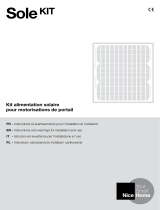 NiceHome SOLEKIT Installation guide
NiceHome SOLEKIT Installation guide
-
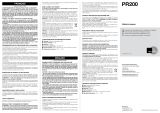 NiceHome PR200 Owner's manual
NiceHome PR200 Owner's manual
-
Sharp EBR99ST Owner's manual
-
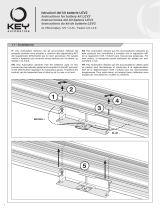 Key Automation 580LEV2 User manual
Key Automation 580LEV2 User manual
-
Victron energy BlueSolar Panels Owner's manual
-
Nostalux 7411 Operating instructions
-
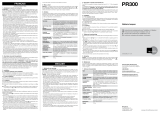 NiceHome PR300 Owner's manual
NiceHome PR300 Owner's manual
-
KS VERLICHTING 7411 User manual
-
Roku Solar panel User guide
-
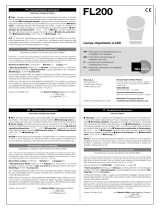 NiceHome FL200 Owner's manual
NiceHome FL200 Owner's manual
















































